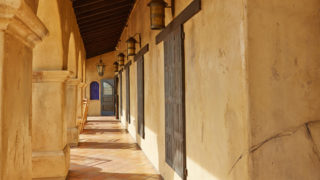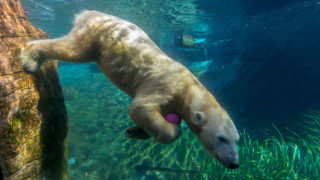Natural History Museum

San Diego Natural History Museum
The San Diego Natural History Museum is the second oldest scientific institution in Southern California and home to a variety of intriguing exhibits. Watch in wonder how the Foucault pendulum swings back and forth, knocking over different dominoes throughout the day, signifying the Earth’s rotation. Invented in 1851 by French physicist Jean Foucault, observers enjoy learning how the pendulum works.
Located in Balboa Park, the family-friendly San Diego Natural History Museum is the oldest scientific institution in Southern California as well as the third-oldest west of the Mississippi. Known locally as the NAT, this premiere museum features fascinating exhibits that celebrate the unique and biodiverse natural world of the Southern California and Northern Baja region. The institution also hosts traveling exhibits that highlight other areas around the world.
The Museum’s History
A Growing Collection
The San Diego Society of Natural History was founded in 1874. As the region’s principal source of scientific and natural history information, the society supported the creation of cultural institutions and conservation efforts. Early founders established a weather station and backed the creation of Torrey Pines and Anza Borrego Desert state parks as well as the establishment of the San Diego Zoo. The society met in 1912 at the Hotel Cecil. In June of that year, the society set up exhibits designed by Kate and Frank Stephens in a single room and an adjoining alcove. Open several afternoons a week, it was the society’s first museum. Five years later, the society purchased a vacant building in Balboa Park that was part of the 1915 Panama-California Exposition to house its growing collection. The institution was the forerunner of the current-day San Diego Natural History Museum.
 The Building Years
The Building Years
Over the ensuing years, the museum would occupy three different buildings in Balboa Park. Leaders realized that the museum would need a larger permanent home. William Templeton Johnson, a leading San Diego architect, was commissioned in 1932 to design the new building located on the park’s East Prado. Johnson had previously worked on the San Diego Museum of Art. Initial construction of the new Natural History Museum was made possible by public donations and a $125,000 grant from journalist and philanthropist Ellen Browning Scripps. Because the nation was in the midst of the Great Depression, the full amount needed to complete the design could not be raised. Although the north and east facades would remain incomplete for the next 60 years, the new museum was dedicated in January 1933.
Expanding Its Presence
While the building served as a naval hospital during World War II, the museum’s collection was temporarily housed at the institution now known as San Diego State University. After the war, the extensive renovation work and re-cataloging of the collection inspired museum staff to concentrate their efforts on the Southwestern U.S. and Northern Mexico. The museum was accredited in 1974. A major renovation and expansion project in 2001 doubled the size of the museum’s gallery space with the construction of a new wing. In addition to gaining the glass-enclosed atrium, the entrance received a new postmodern-style façade. The new wing became home to the museum’s state-of-the-art theater.
Popular Exhibits
Visitors can view various interactive multimedia exhibits. One gallery highlights the history and work of individual naturalists. You can explore the major contributions that these citizen scientists have made over the years. The exhibits in the Coast to Cactus Gallery showcase the unique habitats of the surrounding region. These include coastal wetlands, arid deserts and snowcapped mountains. See live animals as well as preserved specimens and learn about the changing environment and its impact on endangered species. Skulls from around the world chronicle the lives of various animals. You can gain insight into mammals, birds and reptiles as well as their activities in various habitats. There is an exhibit dedicated to the role that water plays in the region. In addition to demonstrating the impact that climate has on the water supply, the exhibit illustrates infrastructure projects’ ability to collect and deliver water. The display also shows how wildlife interacts with various bodies of water. Viewing the fossils of dinosaurs, mastodons and other prehistoric creatures allow visitors to travel back to the time that animals roamed the region before the Ice Age. The museum also hosts a variety of temporary, special and traveling exhibits.
Travel Tips
Museum Information
The museum is open daily from 10 a.m. until 5 p.m., except for Thanksgiving and Christmas. For visitors on a budget, you can save money on general admission by purchasing a multiple day pass. To prepare for your visit, download a copy of the museum guide. The Dinosaur Café offers an assortment of sandwiches, snacks and beverages. In addition to collaborating with a local whale watching excursion company, the museum offers regularly scheduled complimentary guided nature walks through the surrounding area.
 Getting to the Museum
Getting to the Museum
The best way to get to the museum is by taking an Old Town Trolley tour. This way you can explore all that San Diego has to offer. Hop off at Stop K for the Balboa Park area. If you’re planning to drive, there are several small parking lots nearby, they can fill up fast. If you park in the main lot near Inspiration Point, a free tram will shuttle you to and from the NAT. The museum is on the Metropolitan Transit System’s No. 7 bus route.
Things to Do Nearby
There are several other museums and attractions located within Balboa Park that are walking distance from the Museum of Natural History.
 San Diego Museum of Us
San Diego Museum of Us
Housed in historic landmark buildings, the San Diego Museum of Us traces the anthropology of the western Americas, from the pre-Colombian period until the present era. In addition to the indigenous cultures of Southern California, the museum highlights Mesoamerican civilizations like the Maya. The Museum of Us collection also includes rare ancient Egyptian artifacts and antiquities.
San Diego Art Institute
The San Diego Art Institute features a collection of works by artists from the Southern California and Baja Norte region. Emphasizing San Diego County, the contemporary art museum has over 8,000 square feet of gallery space that hosts a variety of permanent, rotating and traveling exhibits.
 Fleet Science Center
Fleet Science Center
The Fleet Science Center is home to over 100 interactive science exhibits designed to educate and entertain children of all ages. The facility also boasts the only domed IMAX theater in Southern California that features innovative nature films and planetary shows.

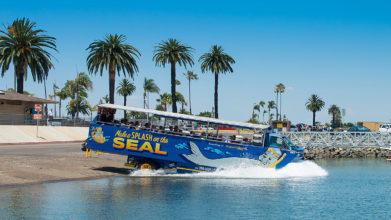
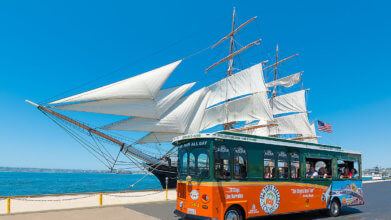
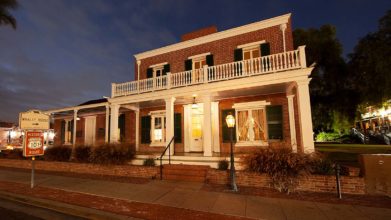
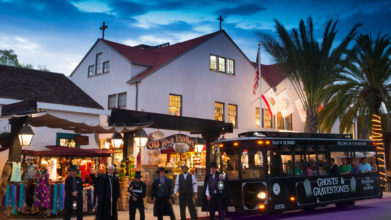
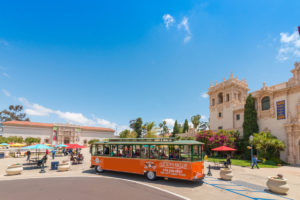 The Building Years
The Building Years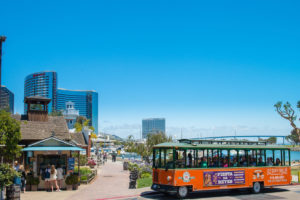 Getting to the Museum
Getting to the Museum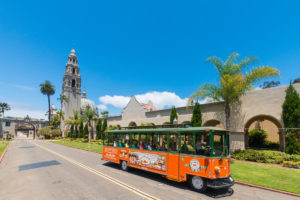 San Diego Museum of Us
San Diego Museum of Us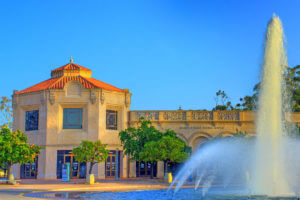 Fleet Science Center
Fleet Science Center
